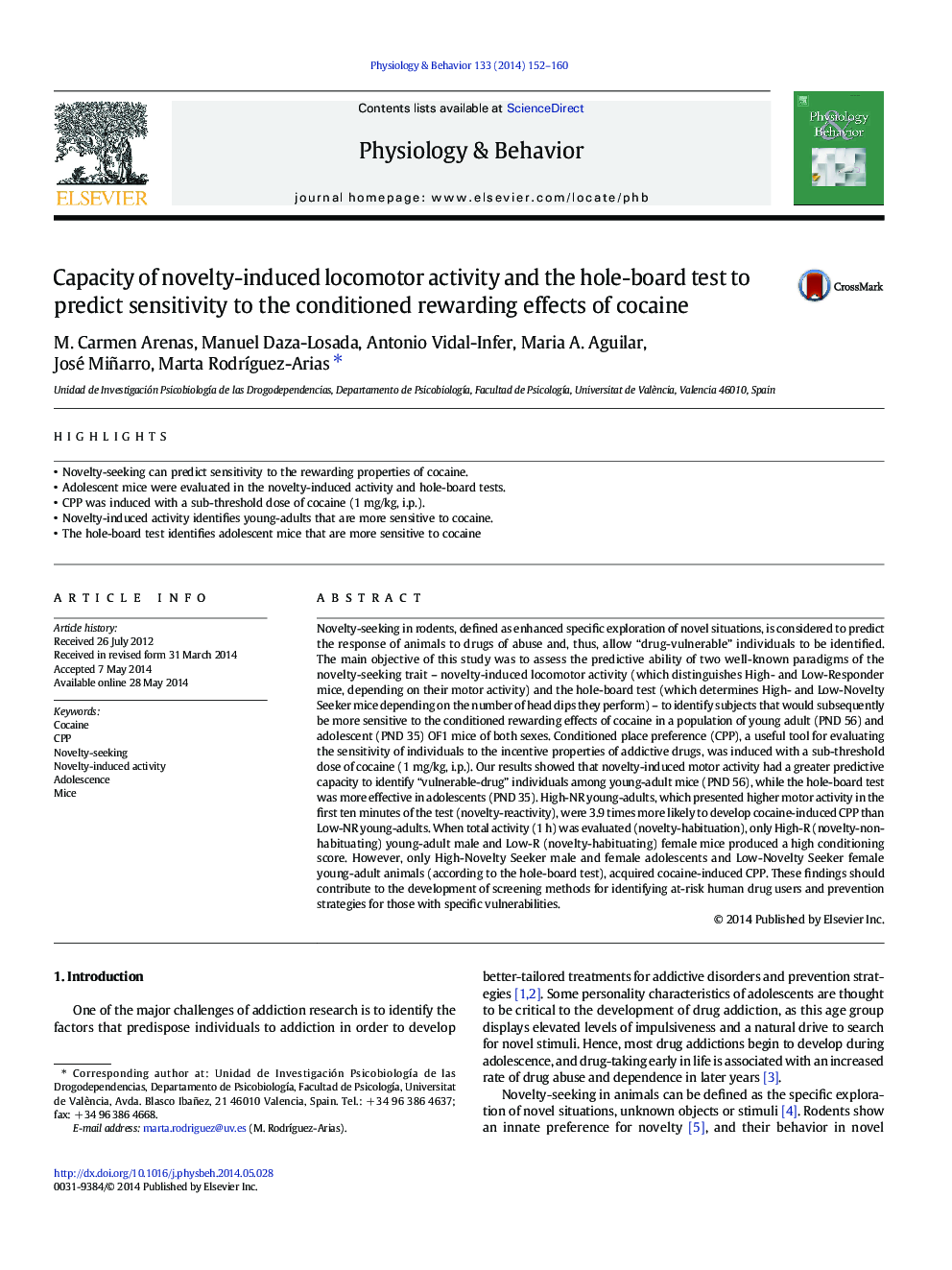| کد مقاله | کد نشریه | سال انتشار | مقاله انگلیسی | نسخه تمام متن |
|---|---|---|---|---|
| 5924156 | 1571184 | 2014 | 9 صفحه PDF | دانلود رایگان |
عنوان انگلیسی مقاله ISI
Capacity of novelty-induced locomotor activity and the hole-board test to predict sensitivity to the conditioned rewarding effects of cocaine
ترجمه فارسی عنوان
ظرفیت فعالیت حرکتی ناشی از اختراع و آزمون غلاف سوراخ برای پیش بینی حساسیت به اثرات متقاعد کننده شرط کوکائین
دانلود مقاله + سفارش ترجمه
دانلود مقاله ISI انگلیسی
رایگان برای ایرانیان
کلمات کلیدی
موضوعات مرتبط
علوم زیستی و بیوفناوری
بیوشیمی، ژنتیک و زیست شناسی مولکولی
فیزیولوژی
چکیده انگلیسی
Novelty-seeking in rodents, defined as enhanced specific exploration of novel situations, is considered to predict the response of animals to drugs of abuse and, thus, allow “drug-vulnerable” individuals to be identified. The main objective of this study was to assess the predictive ability of two well-known paradigms of the novelty-seeking trait - novelty-induced locomotor activity (which distinguishes High- and Low-Responder mice, depending on their motor activity) and the hole-board test (which determines High- and Low-Novelty Seeker mice depending on the number of head dips they perform) - to identify subjects that would subsequently be more sensitive to the conditioned rewarding effects of cocaine in a population of young adult (PND 56) and adolescent (PND 35) OF1 mice of both sexes. Conditioned place preference (CPP), a useful tool for evaluating the sensitivity of individuals to the incentive properties of addictive drugs, was induced with a sub-threshold dose of cocaine (1Â mg/kg, i.p.). Our results showed that novelty-induced motor activity had a greater predictive capacity to identify “vulnerable-drug” individuals among young-adult mice (PND 56), while the hole-board test was more effective in adolescents (PND 35). High-NR young-adults, which presented higher motor activity in the first ten minutes of the test (novelty-reactivity), were 3.9 times more likely to develop cocaine-induced CPP than Low-NR young-adults. When total activity (1Â h) was evaluated (novelty-habituation), only High-R (novelty-non-habituating) young-adult male and Low-R (novelty-habituating) female mice produced a high conditioning score. However, only High-Novelty Seeker male and female adolescents and Low-Novelty Seeker female young-adult animals (according to the hole-board test), acquired cocaine-induced CPP. These findings should contribute to the development of screening methods for identifying at-risk human drug users and prevention strategies for those with specific vulnerabilities.
ناشر
Database: Elsevier - ScienceDirect (ساینس دایرکت)
Journal: Physiology & Behavior - Volume 133, 22 June 2014, Pages 152-160
Journal: Physiology & Behavior - Volume 133, 22 June 2014, Pages 152-160
نویسندگان
M. Carmen Arenas, Manuel Daza-Losada, Antonio Vidal-Infer, Maria A. Aguilar, José Miñarro, Marta RodrÃguez-Arias,
